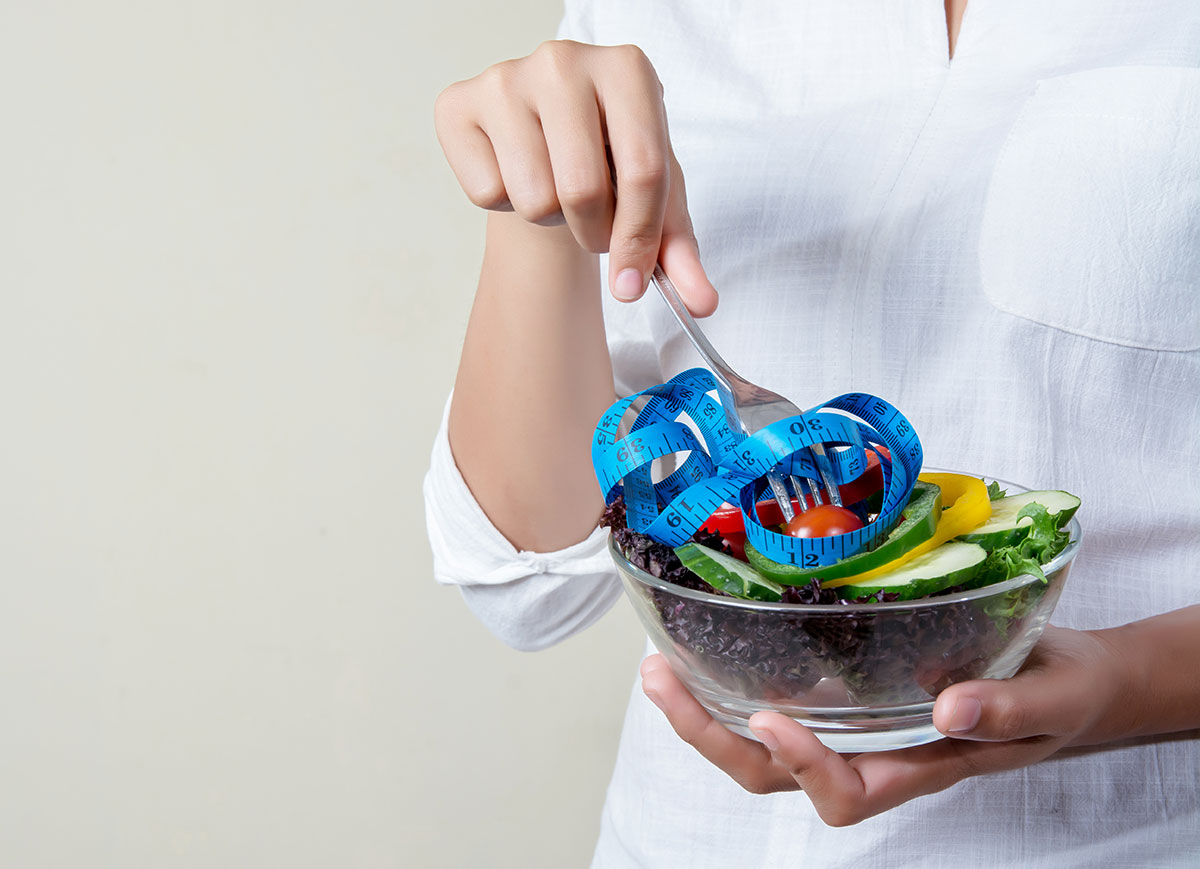Losing weight improves insulin sensitivity in people with type 2 diabetes. Excess body fat leads to an increase in adipose tissue, which causes inflammation and interferes with the function of insulin — the hormone that helps regulate blood sugar levels.
Weight loss reduces adipose tissue, which allows the body to manage blood sugar more effectively. Plus, you don’t have to lose that much weight to see results. Research has found that just a 5% reduction in body weight improved blood sugar levels in adults.
The Glycemic Index of Your Food
A glycemic index is a number that tells you how much your blood sugar will go up after eating a particular food. This method is sometimes called the diabetic diet because it’s similar to the way people with diabetes choose which foods to eat. There are no gimmicks, no measuring or weighing of food, and no counting calories when you follow the glycemic index for weight loss.
Wait… no counting calories?
If calorie-counting programs worked, patients wouldn’t be asking for help.
While calorie intake is an important component of healthy weight maintenance, we’ve learned that it’s the types of food you eat to get those calories that are most important. Refined sugars and white flours make you hungrier and cause you to eat more calories.
Where’s all the sugar coming from?
You don’t have to have a sweet tooth to be eating too much sugar.
Processed foods are Americans’ main source of sugar. These foods (and drinks) have been altered from their natural state so they look and taste good when they’re stored on supermarket shelves. Fat, salt, and – most importantly – sugar are added in large quantities to most processed foods. In other words, they’re the opposite of the untouched, natural foods our grandparents lived on.
It’s easy to find foods that are made with the worst ingredients you can eat – refined sugars and white flours. Bread, pasta, soda, fast food, gourmet coffee drinks, and cereal bars may taste good, but the amount of sugar in our food is making us fat, diabetic, and miserable.
How do refined sugar and flour make us fat?
Your body, digestive tracts, and hormones are designed to process natural sugars, like those in fruits and vegetables. Refined sugar and flour affect our bodies differently than natural sugars:
Natural sugars consist of long-chain sugar molecules – complex carbohydrates – which are usually “wrapped” in fiber. Your body needs time to “unwrap” complex carbs to convert them to energy. This process – breaking down complex carbs into smaller pieces so they can be absorbed and digested – helps you feel full.
Processed sugar and white flour consist of short-chain sugar molecules – simple carbs. They’re not wrapped in fiber and are already broken into easily digestible pieces. Simple carbs are absorbed quickly by the body and cause a fast, substantial increase in blood sugar, also called a sugar spike.
When we eat, our bodies secrete lots of insulin. Insulin is a hormone that directs sugar and calories to be burned for energy or stored in our fat cells as part of our normal, healthy body process.
Our bodies are “time programmed” to keep insulin in our bloodstreams long enough to break down carbohydrates. But our bodies can’t immediately tell whether we’ve eaten healthy food or junk food, so even though simple carbs are absorbed quickly, the insulin hangs around and keeps lowering your blood glucose levels.
What happens when you have low blood sugar? You get hungry.
When you’re hungry, you eat more – and it’s convenient to reach for processed foods like chips, bagels, and crackers. Then the whole cycle starts again. The more refined sugars and flours you eat, the more weight you gain.
That’s why paying attention to your food’s glycemic index works for weight loss. It clues you into how your body will react to certain foods:
Higher glycemic foods trigger more insulin, resulting in more calories stored as fat – and more weight gain. Lower glycemic foods trigger less insulin, resulting in more calories used for energy – and more weight lost.
When you eat natural foods that your body can’t process quickly, you feel full longer, avoid overeating, and therefore avoid weight gain.
How does the glycemic index work?
The glycemic index is pretty simple to use. The numbers can be broken up into three levels:
55 and less: Eat these foods to lose weight. This includes beans, nuts, vegetables, and most fruits.
55 to 75: Eat very few foods in this range. This includes foods like white bread, crackers, bagels, and most sodas and colas.
75 or more: Eat almost no foods in this range. This includes foods like potatoes, sports drinks, waffles, and instant oatmeal.
If you are struggling with your weight, make it a point to follow this easy system. Your goal is to make sure the majority of the food you eat is non-processed, free of refined sugar and white flour, and ranked at 55 or less on the glycemic index.
Most food labels do not list the glycemic index number, but it’s easy to find just about any food’s ranking with a quick Internet search. For example, Harvard Medical School published a list of glycemic indexes for over 100 common foods.
Before you go grocery shopping or sit down to a meal, look up the glycemic indexes of the foods you’re planning to eat. In the beginning, you may be surprised – the indexes often are not what you would expect. In time, though, you will develop a good sense of what will make you gain weight and what will help you achieve your health goals.
To ask additional questions, feel free to get in touch with our experts.


